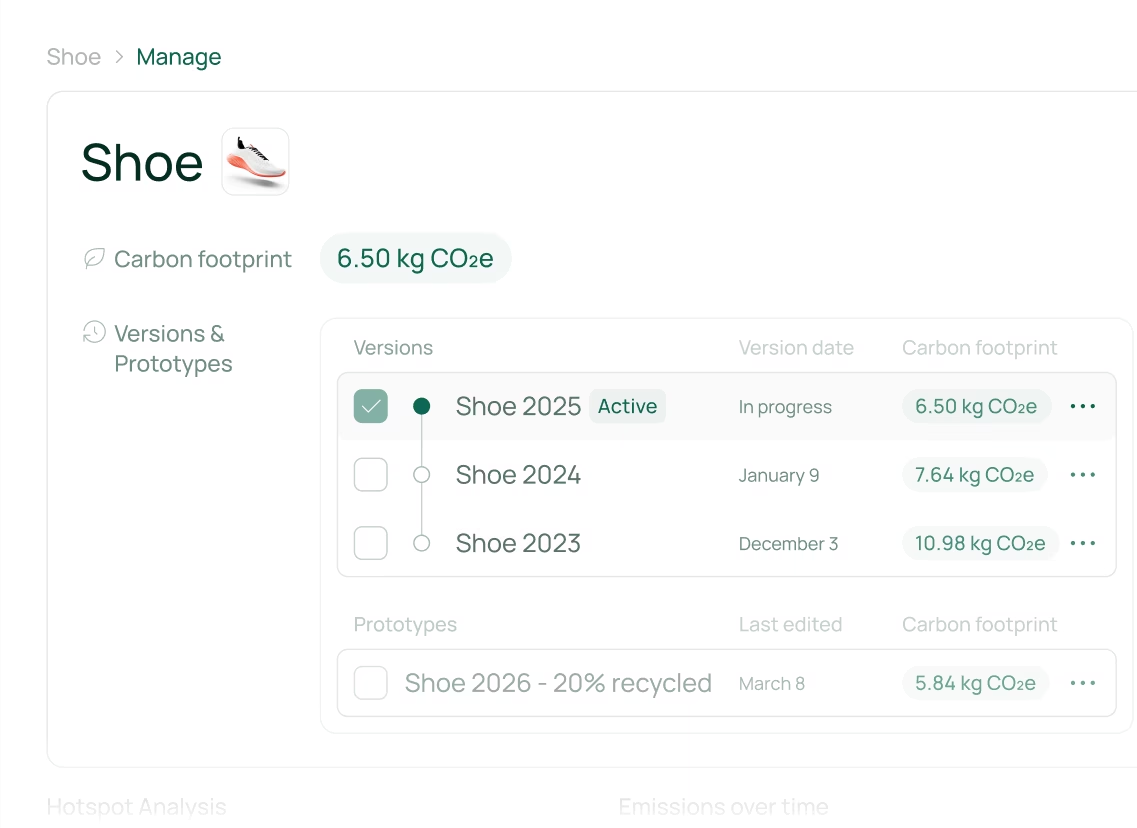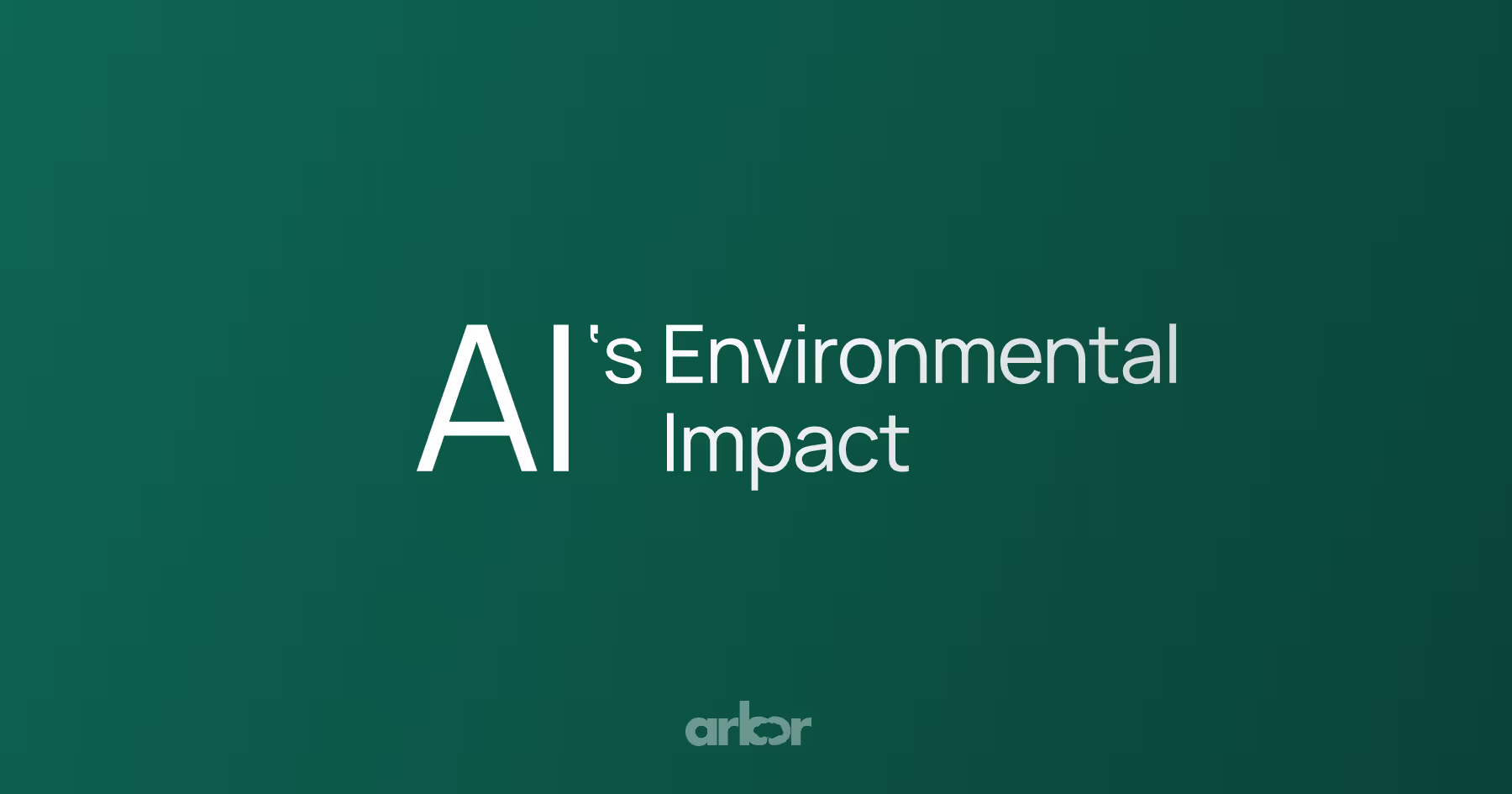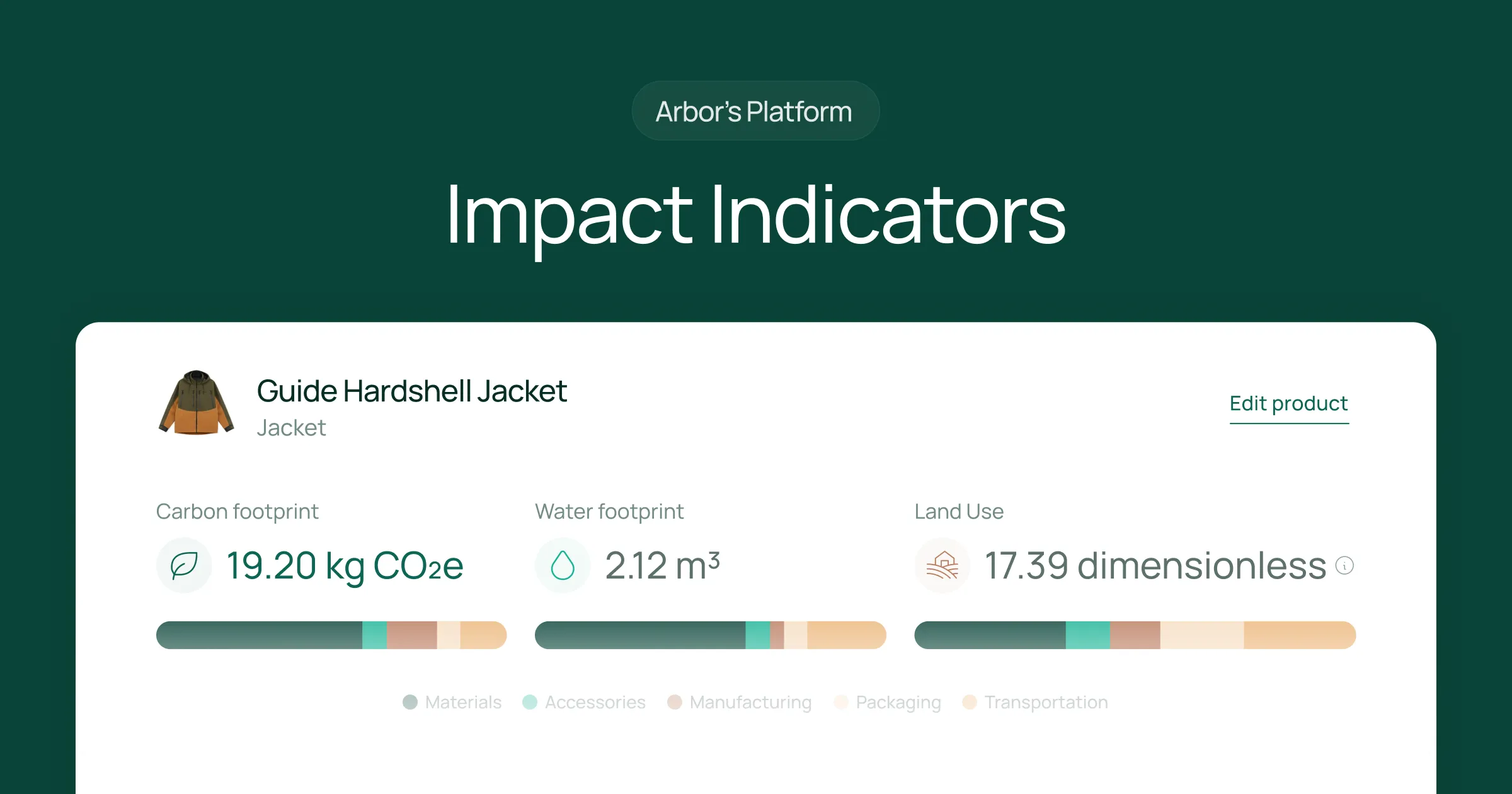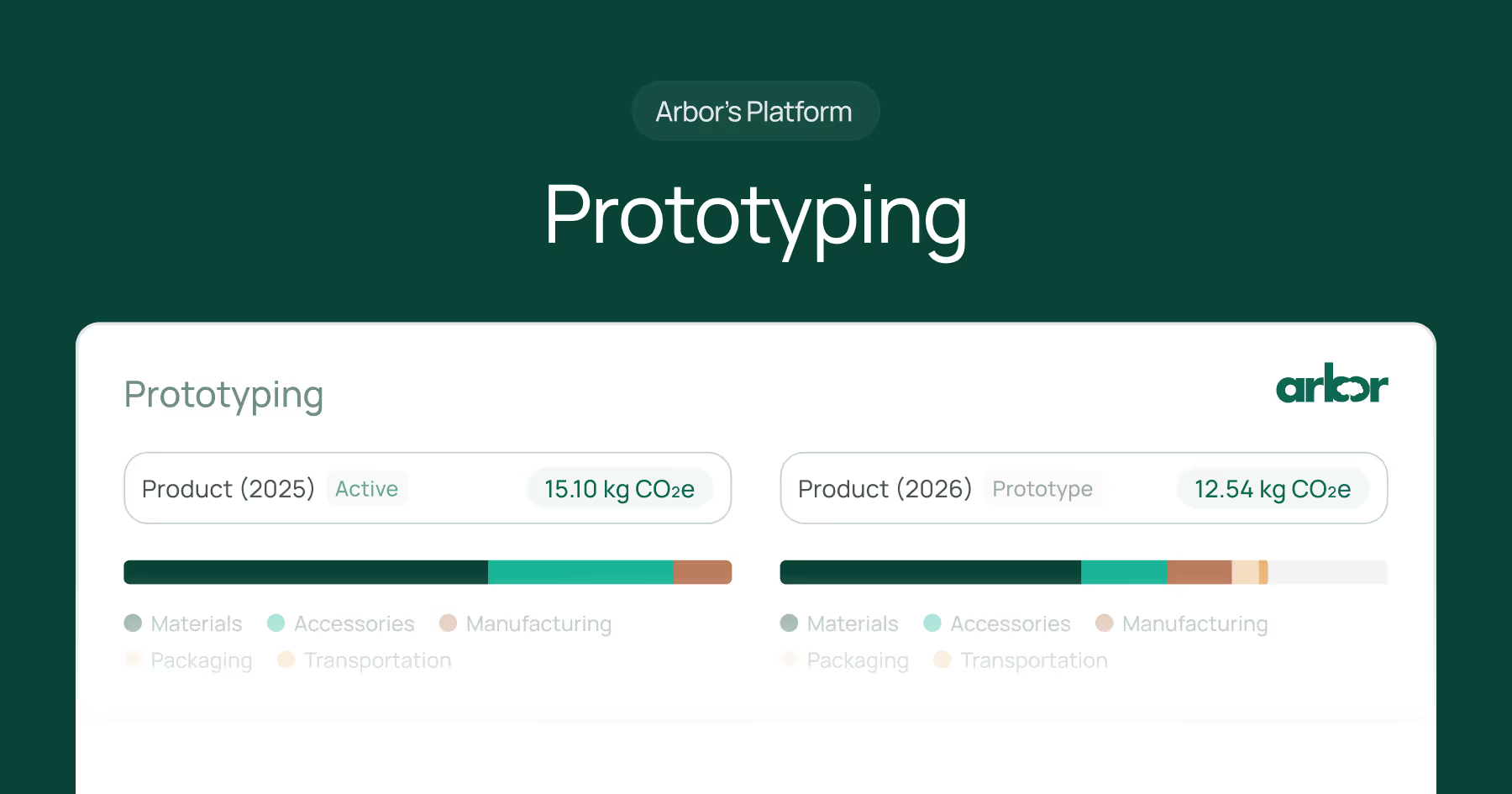- AI's Environmental Impact: The growth of AI significantly increases energy use, contributing to global emissions comparable to small nations.
- Data Center Demand: AI's rise has led to a 72% increase in data center power consumption from 2019-2023 alone, significantly contributing to emissions.
- AI Query Emissions: Each interaction with AI systems like ChatGPT results in 4.32 grams of CO₂e, highlighting the need for emission reduction strategies.
- Industry Initiatives: Companies like OpenAI and Google are adopting renewable energy and carbon-neutral operations to curb AI's environmental impact.
- Sustainability Strategies: Reducing AI’s footprint involves adopting energy-efficient technologies, using renewables, optimizing data centers, and managing e-waste responsibly.
Large Language Models (LLMs) represent a breakthrough in Artificial Intelligence (AI). AI is transforming everything, from online information retrieval to business operations and decision-making processes. Pioneers like OpenAI, with ChatGPT, alongside Google's Gemini, Meta's Llama, Anthropic's Claude, and others, are at the forefront of this AI revolution.
But here’s what no one’s talking about: AI can be pretty terrible for the planet.
Let’s understand AI’s environmental impact and see what we can do to reduce emissions from AI.
Why do AI emissions matter?
AI’s backbone consists of vast data centers that house thousands of machines that require continuous power. The energy consumed by AI systems worldwide could surpass the annual consumption of entire countries like Denmark or Portugal.
The rise of AI has led to a 72% increase in data center power consumption from 2019-2023 alone (Bain).
Below, I use a high-level example to illustrate the carbon impact of ChatGPT, the most widely used large language model (LLM).
What is the carbon impact per ChatGPT query?
Each query sends out roughly 4.32 grams of CO₂e (MLCO2), which may seem trivial on its own but adds up millions of queries a day, and you're looking at a staggering daily output.
To put that into perspective, 1 million messages sent to ChatGPT is equivalent to (EPA):
- 11,001 miles driven by an average gasoline-powered passenger vehicle
- 4.3 acres of carbon absorbed by U.S. forests in one year
- 349,258 smartphones charged
The industry's response to environmental concerns
AI leaders are taking significant steps to mitigate this impact. OpenAI, for instance, partners with Microsoft to leverage Azure's carbon-neutral capabilities, aiming to curb emissions related to their vast AI operations.
Their collaboration reflects a growing industry trend toward sustainability:
- Azure: Azure's data centers are committed to becoming carbon-negative by 2030. To reduce their carbon footprint, they use renewable energy and offset programs.
- AWS: Strives to achieve 100% renewable energy usage by 2025 and offers sustainability tools to help clients calculate and manage their emissions.
- Google Cloud: With its sustainable data centers, Google Cloud matches 100% of the energy used by its operations with renewable energy purchases.
How data centers contribute to AI's footprint
Data centers are the physical manifestation of AI’s environmental impact. The sheer scale of these facilities, with their thousands of servers running 24/7, makes them one of the most significant energy consumers globally.
In fact, data centers already consume around 1-1.5% of global electricity, and this number is set to grow exponentially with the rise of AI (IEA).
To truly address the AI environmental impact, we must look at the two primary sources of data center emissions:
Operational Emissions
These are the greenhouse gases released from the energy used to power and cool the data centers during their day-to-day operations. This is the most visible and widely discussed aspect of a data center's carbon footprint.
Embodied Emissions
These are the "hidden" emissions released during the manufacturing of materials, construction of the facility, and eventual decommissioning of the hardware and building.
Embodied emissions can represent a significant portion of a data center’s total carbon footprint, especially as the operational energy source becomes cleaner. To achieve true net-zero, companies must prioritize low-carbon materials, design for modularity, and embrace recycling and reuse strategies.
Achieving a "net-zero" data center requires a comprehensive approach that considers a building’s entire lifecycle, from the steel and concrete used in construction to the energy that powers the servers.
{{cta}}
How to measure the environmental impact of AI
Here are five simple steps to estimate the carbon emissions from your AI workloads.
Step 1: Figure out what you’re actually tracking
Measuring AI emissions begins with setting clear boundaries. Consider where AI is used in your organization and what activities you want to measure.
Which do you fit into?
1. Are you training your own AI models on internal infrastructure?
If you’re training your own LLM models using your company’s owned servers, the emissions fall under Scope 1 and 2, as they stem directly from your controlled operations.
2. Are you licensing AI capabilities externally, like OpenAI’s models or using APIs?
If you’re paying for server costs from external providers like AWS or Azure, those emissions shift to Scope 3 since the carbon impact is added under Scope 3 Category 1: Purchased Goods and Services.
Step 2: Track how much compute power you’re using
AI runs on computation, and computation runs on electricity. To calculate your emissions, you need to track how much compute you're using.
For Internal AI Models
If your company builds and trains AI models in-house, you’ll need to calculate the energy usage of all hardware. This includes tracking energy consumption (in kWh) in stages such as the training, finetuning, and inference phases of the AI lifecycle.
For External AI Models
If you’re licensing an AI model from external providers (e.g., OpenAI, AWS, or Azure), you won’t have direct access to their computing power or the servers running behind the scenes. Instead, focus on usage metrics and count the number of API calls or inference requests.
For example, each time your app queries OpenAI's API, that action consumes compute resources.
💡 Pro Tip
Most cloud providers offer dashboards or billing reports that list usage by compute hours, storage, and networking. Use those as your starting point.
Step 3: Find your energy source
Electricity powers your AI, but not all electricity is created equal. Depending on whether your data centers (or cloud provider servers) are in areas powered by coal, natural gas, or renewables, the carbon impact can vary a lot.
Figure out the location of the servers running your workloads.
- If your servers are based in a region with clean energy grids (like Norway or parts of Canada), emissions will be much lower.
- On the other hand, data centers operating in coal-heavy regions will produce significantly more emissions.
Use Our World in Data’s tool to determine the carbon intensity of the energy grid in your region.
Step 4: Use emission factors to calculate the carbon impact
Once you know how much electricity your workload consumes and where the servers are located, use emission factors to calculate how much CO2e (carbon dioxide equivalent) is produced per unit of energy.
For example:
- Let's assume a typical data center in the U.S. emits 0.4 kg of CO2e per kWh of electricity used.
- If you know your AI workload used 1,000 kWh, calculate as follows:
- 1,000 kWh × 0.4 kg CO2e/kWh = 400 kg CO2e
Step 5: Quantify total emissions using a carbon calculator
Here are two reliable options:
- Cloud Provider Emissions Calculators: AWS, Microsoft Azure, and Google Cloud all offer tools to estimate emissions for their customers.
- Self-serve Carbon Accounting: Platforms like Arbor specialize in bottom-up, value-chain-specific carbon footprints, empowering companies with precise sustainability data.
However, remember that calculators are only as good as the data you input, and actual improvement occurs when you utilize your own data to optimize your value chain.
How can we reduce the environmental impact of AI?
Addressing the environmental challenges posed by AI requires a shift towards sustainable practices. This includes:
- Investing in energy-efficient hardware and algorithms: Developing AI models and hardware requiring less energy can significantly reduce the overall environmental impact.
- Powering AI operations with renewable energy sources: Transitioning to renewable energy sources like solar and wind power can mitigate carbon emissions associated with AI.
- Optimizing data center locations and cooling systems: Strategically locating data centers in regions with access to renewable energy and implementing efficient cooling systems can minimize environmental impact.
- Developing AI models focusing on resource efficiency: Designing resource-efficient AI models can help reduce energy and water consumption.
- Promoting responsible e-waste management: Proper e-waste disposal and recycling programs can prevent environmental contamination.
The future of AI and the environment
Industry leaders must work toward sustainable solutions to curb AI's environmental footprint. This includes investing in energy-efficient technology, using renewable energy, improving data center operations, designing resource-efficient AI models, and responsibly handling e-waste.
AI and its systems will become more efficient over time, balancing their environmental impact with their positive benefits.
Measure your emissions with Arbor.
Measure your carbon emissions with Arbor
Simple, easy carbon accounting.

FAQ about AI’s environmental impact:
What is the carbon footprint in AI?
The carbon footprint of AI primarily comes from the infrastructure needed to support AI operations, such as data centers. These facilities consume enormous amounts of power, generally sourced from fossil fuels, leading to substantial greenhouse gas emissions. Efforts to reduce this footprint include using energy-efficient technologies and increasing reliance on renewable energy sources.
Is AI increasing carbon emissions?
AI does contribute to increased carbon emissions due to the energy-intensive processes involved, particularly in training large models. Companies like Google and Microsoft have reported significant emissions linked to their AI operations, highlighting the technology’s role as a contributor to climate change.
Is AI bad for the environment?
AI can have detrimental environmental impacts due to its reliance on non-renewable energy sources, contributing to greenhouse gas emissions. The physical production of AI hardware involves mining metals, which can lead to soil erosion and pollution. Improper electronic waste recycling further exacerbates pollution, contaminating soil and water sources.
How does AI impact water consumption?
Data centers, which house the servers needed for AI operations, consume large amounts of water for cooling purposes. In the United States, these centers use approximately 7,100 litres of water for every megawatt-hour of energy consumed, posing a significant strain on water systems, especially in areas of water scarcity.
What is the environmental footprint of ChatGPT?
ChatGPT emits approximately 4.32 grams of CO2 per query, which is a significant amount compared to a Google search. Maintaining systems like ChatGPT requires substantial water and energy resources, contributing further to its environmental footprint.
What are the solutions to reduce AI’s carbon footprint?
Reducing AI’s carbon footprint involves several strategies, such as using energy-efficient hardware, optimizing data centers for better energy use, and utilizing renewable energy sources. Improving AI model training processes and adopting pre-existing models whenever possible can lessen environmental impact.
Can AI help reduce its electricity consumption?
AI's energy consumption can be minimized by designing smaller, more task-specific models and enhancing data processing efficiency. Reducing the unnecessary use of data in AI systems can also significantly reduce energy consumption.
What role does electronic waste play in AI’s environmental impact?
AI systems contribute to electronic waste as hardware components become obsolete. If not appropriately recycled, this waste releases toxic substances into the environment, further degrading soil and water quality.
What is the impact of AI on climate change?
AI's significant energy consumption and reliance on non-renewable resources increase greenhouse gas emissions, contributing to climate change. However, AI also offers potential solutions for environmental management, such as optimizing energy use and supporting the development of smart grids.
What are the benefits of making AI environmentally sustainable?
Shifting AI operations to rely on sustainable practices can significantly reduce carbon emissions and mitigate the strain on water systems. Additionally, AI can be harnessed to create eco-friendly technologies and systems, demonstrating its potential to impact environmental health positively.




.webp)











%20Arbor.avif)





%20Arbor.avif)


.avif)






%20Arbor%20Canada.avif)

.avif)
%20Arbor.avif)
.avif)





_.avif)
.avif)
%20Arbor.avif)




%20Software%20and%20Tools.avif)





.avif)
.avif)




%20EU%20Regulation.avif)












.avif)


%20Arbor.avif)









_%20_%20Carbon%20101.avif)







.avif)

.avif)
.avif)



.avif)








